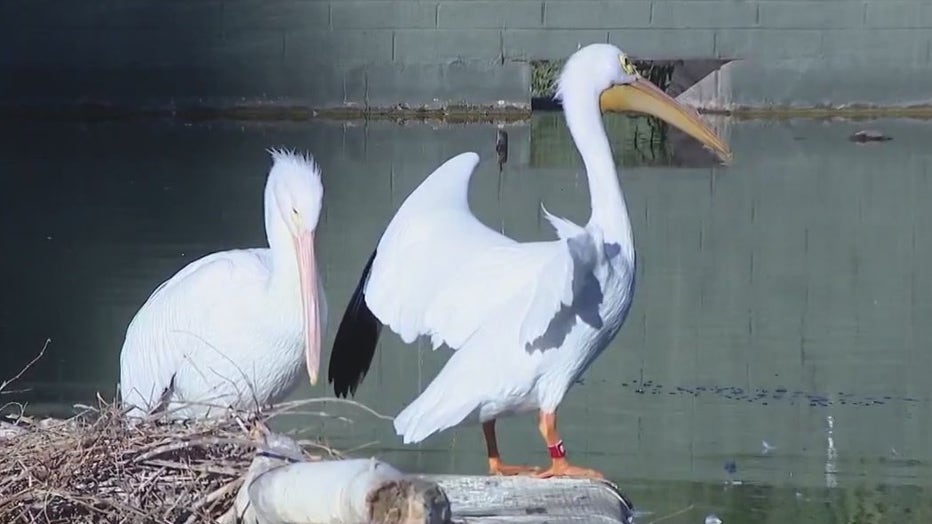14 pelicans die at the Phoenix Zoo from the bird flu

14 pelicans die at the Phoenix Zoo from the bird flu
The Phoenix Zoo lost more than a dozen pelicans from the bird flu as it's spreading through the country and other parts of the world.
PHOENIX - The Phoenix Zoo lost more than a dozen pelicans from the bird flu as it's spreading through the country and other parts of the world.
Sixteen pelicans once called a lake at the zoo home. Now, only 2 remain.
"We had pelicans that acted abnormally," explained Dr. Gary West, senior vice president of animal health and living conditions at the zoo. "Some of them were swimming in circles. They had neurological signs, seizures, unable to stand, and then rapidly died after that."
West says the pelicans caught the bird flu, Highly Pathogenic Avian Influenza (HPAI), from wild birds that migrated to Phoenix.
"On Saturday, October 15, some of the Zoo’s pink-backed pelicans began showing signs of neurologic impairment. Shortly after, both of the Zoo’s brown pelicans and three white pelicans also developed similar symptoms," West explained. "Despite being taken to the Zoo’s animal care center for examination, testing and intensive treatment, we unfortunately lost all nine pink-backed pelicans, one brown pelican and two white pelicans. Another two pelicans who were exhibiting similar symptoms were humanely euthanized last week."
Samples that were sent out tested positive for the virus.

Pelicans at the Phoenix Zoo
The Centers for Disease Control and Prevention says the bird flu has been detected in 46 states and has affected more than 44 million birds of different breeds.
"We are a little on pins and needles," West said. "A little bit nervous."
The Phoenix Zoo has other pelicans living in a different part of the zoo, plus a variety of other bird species. Why they haven't gotten sick is a mystery.
"Why it was isolated at this lake, we don’t know," West said.
"The affected pelicans were all housed on the lake in the Children’s Zoo area. The Zoo’s dalmatian pelicans, and the rest of the Zoo’s birds seem to be unaffected at this time. The Zoo’s pelicans live outside, so they do have direct contact with wild birds, but fortunately, the pelicans don’t come into contact with other Zoo birds," West said.
Zoo officials want to remind you it’s never a good idea to feed any wild geese or ducks. If you see a dead bird, you should report it to the Arizona Game and Fish Department.
Health officials say transmission between birds and humans is low.

